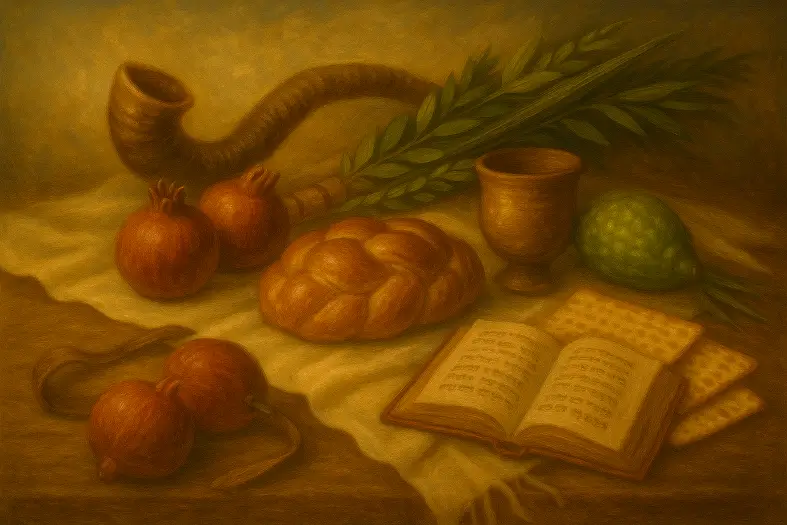


On Shavuot, Israel must bring two loaves of new wheat as a wave offering, baked with chametz, alongside animal sacrifices.
This mitzvah commands the offering of shtei halechem (two loaves) on Shavuot, the only communal offering of chametz permitted in the Temple. These loaves, made from the first wheat harvest, were waved with two lambs of shelamim and became sanctified for priestly consumption. Rambam (Hilchot Temidin uMusafin 8:2) codifies this mitzvah as central to Shavuot.
The Sefer HaChinuch (Mitzvah 308) explains the two loaves symbolize the perfection of Israel’s harvest and the completion of the journey from barley (Omer) to wheat (Torah). Talmud (Menachot 45b) teaches that just as Israel received Torah on Shavuot, the loaves reflected their spiritual readiness, elevated from animal fodder (barley) to human food (wheat). Ramban highlights that the two loaves paralleled the two tablets of the Torah, both received on Shavuot.
Commentary & Classical Explanation:
Contrast with the Omer Offering (Mitzvah 384):
Parallel to Lechem HaPanim (Showbread, Mitzvah 381):


Mitzvot related to the Jewish festivals — their observance, rituals, prohibitions, and spiritual significance. This includes Torah-commanded holidays like Pesach, Shavuot, and Sukkot, as well as rabbinic celebrations such as Purim and Chanukah.
Concerns the Beit HaMikdash, korbanot (offerings), and priestly service.
Represents Emunah—the deep, inner trust in Hashem’s presence, oneness, and constant involvement in our lives. This badge symbolizes a heartfelt connection to G-d, rooted in belief even when we cannot see. It is the emotional and spiritual core of many mitzvot.
Represents the concept of spiritual intentionality, purity, and sanctity—set apart for a higher purpose.
Mitzvot that define and deepen the relationship between a person and their Creator. These include commandments involving belief, prayer, Shabbat, festivals, sacrifices, and personal holiness — expressions of devotion rooted in divine connection.

Dive into mitzvot, prayer, and Torah study—each section curated to help you learn, reflect, and live with intention. New insights are added regularly, creating an evolving space for spiritual growth.

Explore the 613 mitzvot and uncover the meaning behind each one. Discover practical ways to integrate them into your daily life with insights, sources, and guided reflection.

Learn the structure, depth, and spiritual intent behind Jewish prayer. Dive into morning blessings, Shema, Amidah, and more—with tools to enrich your daily connection.

Each week’s parsha offers timeless wisdom and modern relevance. Explore summaries, key themes, and mitzvah connections to deepen your understanding of the Torah cycle.